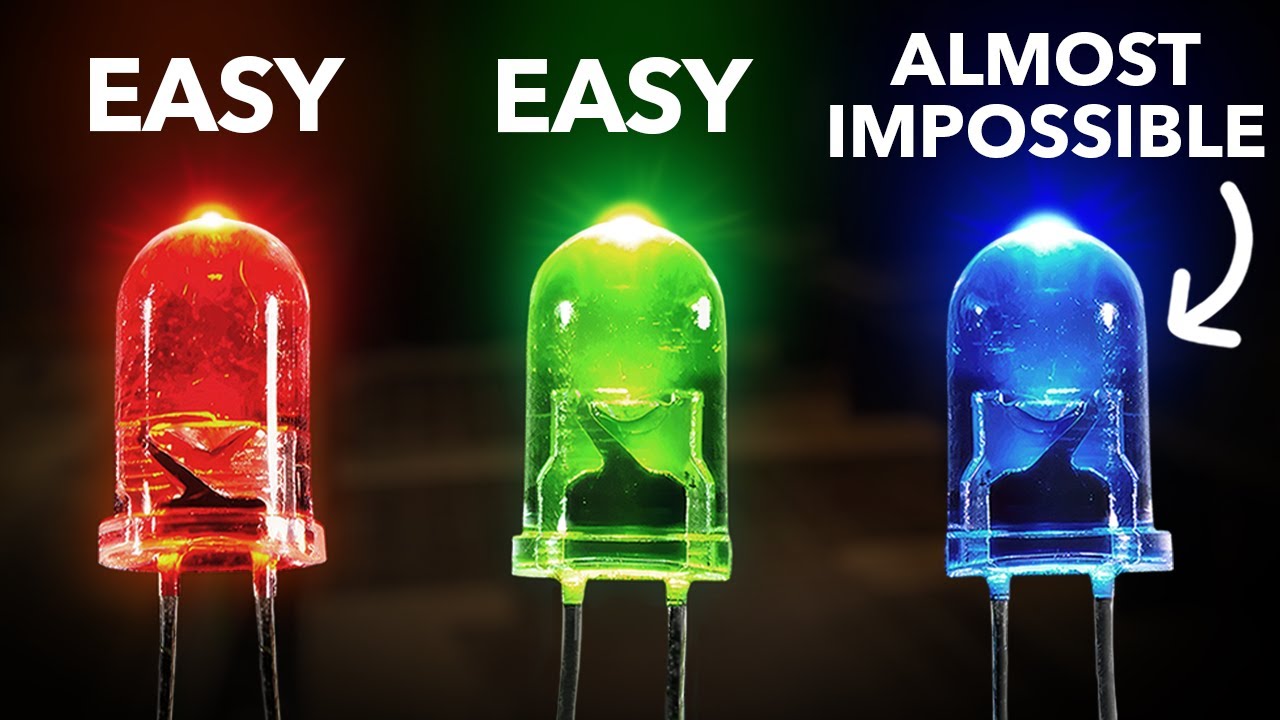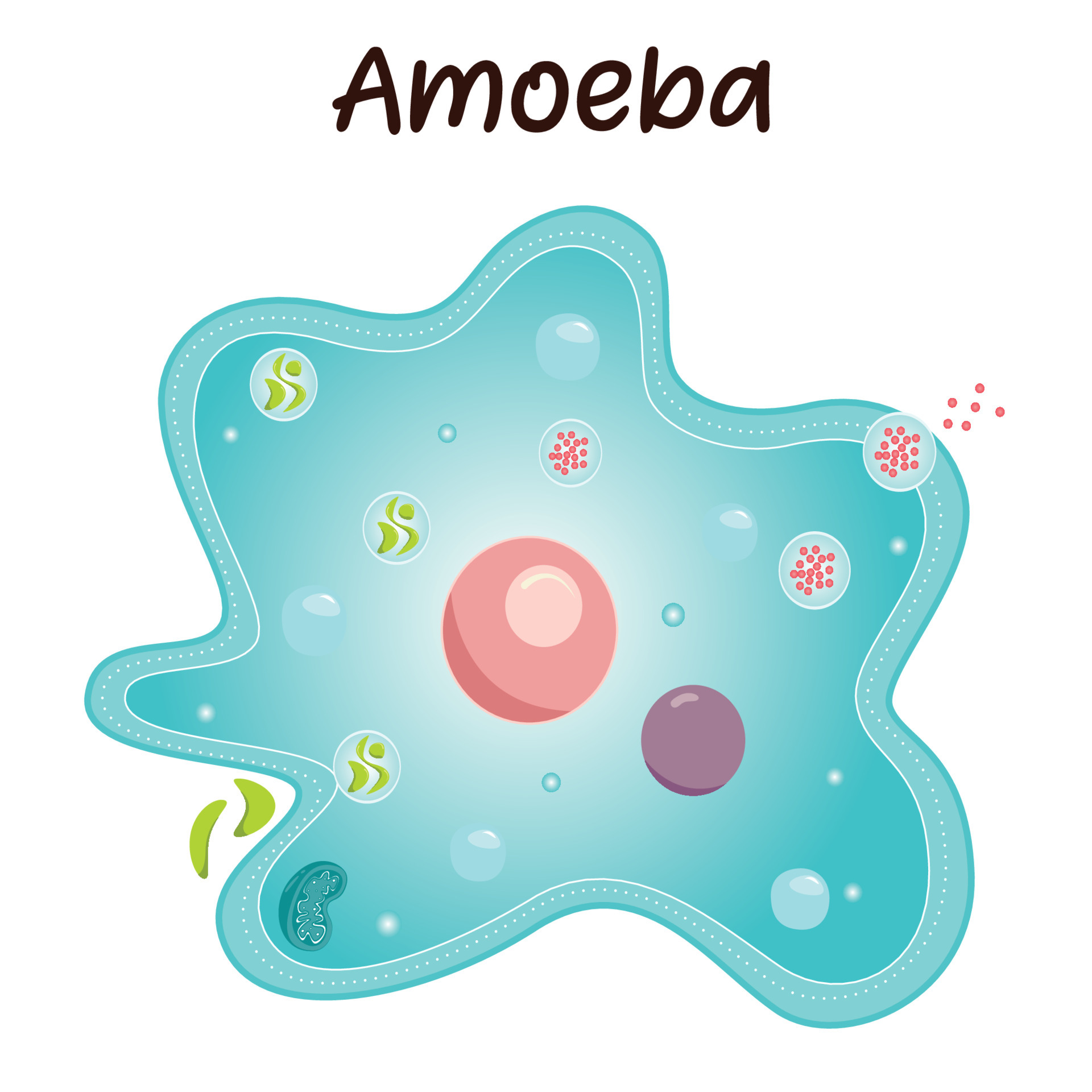- cross-posted to:
- science@lemmy.world
- cross-posted to:
- science@lemmy.world
The blue LED was supposed to be impossible—until a young engineer proposed a moonshot idea.
Really annoying that the company shat on him for years, and continued to do so after he multiplied the value of the company. Toxic behavior.
It’s an extreme example that perfectly illustrates how profit is extracted from employees by the employers. He didn’t have any leverage to get a larger share of the profit from his labor, as is the case with most employees. You could call it toxic behavior, and it is, but it’s the expected behavior, the behavior incentivised by the system.
Makes me presume power harassment.
On the flip side, he was using up millions and millions of company dollars on his singleminded pursuit with no obvious results to show for it. Had things gone even a little differently, things would’ve gone very differently indeed. Hard to imagine most companies tolerating an employee flat ignoring instruction to change to another task when their old task was proving fruitless.
Hindsight is clear enough here, but in context it was pretty nuts what the guy was doing.
Makes you wonder how many great inventors of revolutionary tech were shoved off their path by dumb luck.
Probably far fewer than never had the opportunity to realize they could be great in the first place.
If greatness is one in a billion we have 8 (boy would the richest like us to believe that!). If it’s one in 100 million (I’m bad at math. I think it’s like) 80. Or if it’s one in a million, that’s 350 in the US alone. I’m inclined to lean toward the later, after all, if there aren’t a lot of greats waiting to be called up, how the fuck did we beat the odds by such a large margin??
I bet he was ok with : Nobel prize bitch!
Didn’t fire him though. I don’t think my boss would let me sit in an office doing my own project and binning notes from him for 20 years.
That’s Japan, baybee. They love their toxic work culture. Thankfully, it is slowly changing with the younger generations, however.
The blue led was released in 1993. I remember reading an article in Wired magazine (back when magazines were published on paper) about the invention. Gladly, the article is still available online: https://www.wired.com/1995/03/blue-laser/
I talked with some friends about the “true boo-roo” led, and the phrase stuck with us (that’s why I still remember the article). At the time (almost 30 years ago) we had no idea how important the invention was, even when we realized that it allowed for rgb led light.
But we had no idea leds would be miniaturized to be used in screens and be as ubiquitous as they are today. Living through all this technology evolution has been quite the ride.
That was a great read, thanks. It made me realise I don’t even remember the last time I changed a light bulb!
I wish I could say the same. I have had one of two that had circuits that burned out. One was cheap and not surprising. The other was a Hue. Speaking of Hues, mine all seemed to stop working with Google Home and one even decided it would permanently be disco time and continually flashes. Zigbee compatible bulbs only from now on for me.
The leds can work for like 20 years. On the other hand the rest of the components are not necessarily going to last that long unfortunately.
I’ve changed my fair share of LED bulbs. Nowhere near the frequency of incandescent though.
I remember reading about this stuff since the eighties and people had a pretty clear idea of the implications.
Well now the digital screen is everywhere, it bends, and some people strap it to their eyes. It’s crazy how far it’s come
I typed this on a folding screen, even!
Wow, thank you for sharing that.
Excellent counter example to anyone claiming that we need patent and copyright to innovate.
This man made nothing on his invention and was not motivated by money but fame.
There are endless of examples of how those who do things for money hold back the creativity that leads to innovation. This is one of them. It almost didn’t happen because his pursuit was not seen as profitable.
Sure, but the company fronted the millions of dollars required to develop the technology. The investment needs to come from somewhere.
That doesn’t have to be a private company, though. We need public funding that retains the patent rights, if not just to make the invention free from licensing costs to manufacture.
The insane thing about our current system is that we do have public funding, but private companies wind up with the patent anyway
The company didn’t invent it. A person did. The company almost stopped it from being invented. They didn’t spend millions inventing this. A person spent tens of thousands of hours inventing it.
That the funding is only available from a company is a result of the patent system. It does not spur development, it perverts it. Any ideas to the contrary are propaganda.
People have been inventing shit longer than corporations have existed. People have been inventing things without any guarantee on return on investment for most of human history.
Capitalism is bullshit and the capitalization of ideas harms humanity.
Maybe they didn’t invent it. But he wouldn’t and couln’t have invented it without them.
Someone would have invented it eventually though.
Correct. With or with patents and with or without copyright, it eventually would have been invented.
Edit: Curious if you watched the full video. It clearly indicates that all corporate efforts were heading in an opposite direction and that the path this inventor took was considered to be not profitable and not worth the investment by everyone else working on this. The company he worked for wanted to shut down his research and focus on following the herd. No one else was close to his level of progress and capitalist interests almost scuttled this invention.
Yes, I watched the video. Inventing stuff is obviously very expensive and I doubt anyone could have done it without being financed in some way.
Why are you so sure that the eventually hypothetical inventor wouldn’t have patented it? Inventing is expensive and one would presumably want to make the millions spent on the project back and isn’t your time worth anything?
I am happy that the invention wasn’t delayed considering how much it has changed the world.
I mean, the video even showed that there WERE notable people other than him travelling down the same path, his first few leaps were copied off them, he just figured out the last few himself
Yeah it’s pretty bad and nobody talks about it. Nobody researches the effects of patents on our global civilization. I suspect the practical role of patents is to actually retard innovation - something gets improved or invented or most of the time just engineered to work better and monopolization or just paperwork makes it too expensive for wide spread adoption. This in turn helps prevents disruptive technology from making large scale investments obsolete - instead of having to adopt and improve your factories you can continue as before because any innovation will be slow and also priced to be around as expensive as existing solutions. Or the patent can just be bought. And even if an inventor has noble intentions, starting manufacturing yourself is a totally different skill set so like most startups often fails and then the patent gets sold off. Innovation becomes a commodity.
This is my logical conclusion but it’s speculative. I suspect researching negative effects of patents is a somewhat “taboo” topic for scientists to research.
In regards to climate change this becomes… genocidal. We have hundreds of thousands of industrial processes that rely on fossil fuels or certain levels of energy. With all the before mentioned effects this basically made a timely response to climate change impossible. Every little improvement to existing processes is patented and maximized for profit. Basically we never had a chance.
This man made nothing on his invention and was not motivated by money but fame.
And then he sued the company for $20 million because the CEO didn’t want to respect his efforts and stiffed him.
And the amount he actually won only covered the legal fees, so he made nothing.
And if he had been granted a patent for his invention, he would have been fairly compensated for his work by being able to license production to companies that had the means to make them at scale. OP seems to think this scenario is an example of how patents should be abolished, but it’s a perfect example of why we have them in the first place. And that reason is so that rich people don’t fuck over comparatively poor inventors.
Your cognitive dissonance is why we cannot improve this system. Patents cannot both be responsible for his lack of profit from his invention and how he would have been fairly compensated.
Patents do exists and we was not fairly compensated, therefore patent do not solve their intended problem.
We live in this reality. Not whatever rose colored version you think could exist if we just get the correct tweaks in place.
At some point we need to stop trying to adapt the concepts people came up with hundreds of years ago. Created in a world that no longer resembles our own.
Consider how contentious the issue was that they redefined to included it in the constitution. The consider what other contentious issues were also included in that same document, i.e. the three fifths compromise.
Parents do exists
Phew, was scared there for a second.
My favorite thing about widely-available blue LEDs was the effect on TV scifi.
Watch the Star Trek shows made in the 1980s and 1990s and the tricorders, alien gadgets, and other props were always twinkling with red, yellow, and green LEDs to look futuristic. A generation later and every single hand prop on 2000s Doctor Who, Torchwood, etc. glowed and twinkled blue because the LEDs had just become cheap enough for prop makers, but weren’t yet widespread in day-to-day life so the viewers were seeing something strange and unusual.
Now every color of LED imaginable is just common and whatever, but for a good stretch of time glowy blue became the standard “scifi” color just because that particular tech happened to turn up at that particular time.
Purple still seems to be a tough one for most rgb devices I’ve used lol
9’s sonic screwdriver
I’m not sure that LEDs were the thing that kicked off the trend. They made it easier to implement, but even in the 80s and 90s, you had things like Tron that might have kicked off the futuristic look with neon lines/tubes.
It seems that the blue led is picked by many manufacturers now for its coolness factor. There are so many appliances people have in sleeping areas with blue lights glaring and disturbing sleep
I carry a bit of gaffer’s tape everywhere for those little obnoxious blue bastards.
It’s such a big problem that there’s literally LED dimming tape on the market. It’s semi-transparent tape that you stick over the blue LEDs, to knock them down to a more reasonable brightness. It’s akin to putting sunglasses on your appliances.
I just layer on masking tape until it’s dim enough, usually 2 layers
The last like 3 computer cases have had blue power leds. They often are brighter than night lights. I have gotten to the point where I only connect the power button as the leds are so bright and the number of times I’ve inadvertently hit the reset button.
I made a hobby PCB with indicator LEDs and I have to admit that was the reason for my choice. The surface mount frosted “milky” ones look especially great, where they have the diffusion layer so it’s not a harsh glare.
This was an yet another glorious episode from veritasium.
I hope we get well past UVC LEDs. (i.e., shorter wavelengths) UV LEDs are already available. Unfortunately, this progress will stop before X-ray light. With +1 KeV energy, you pretty much must blast off the electrons from the atoms to emit X-rays, which an x-ray tube already does. Or by peeling off a piece of scotch tape.
Maybe making X-ray emitters cheap enough to put in a flashlight isn’t the best idea anyway.
Maybe not in a flashlight, but the scientific industry would be very pleased with them. Sterilize water and all surfaces in a second? Flash with 200nm light.
What’s wrong with the current UV tubes? Sure, the smaller ones take about 5-10 W to get the job done, so maybe an LED version would be more efficient. If you’re using UV to keep a massive pool clean, then you’re obviously going to be need more of those bulbs, and they can add up to hundreds of watts quite easily. Is that really a big problem though? Having a pool isn’t cheap, so electricity spent on UV probably isn’t going to be your main concern. Making it cheaper is always welcome, but are UV tubes really that big of a problem?
I mean they aren’t instant and have to be within a fairly short distance of the thing you want to sterilize in order to work because they are absorbed by the air. Something like a pool would be practically impossible as water also absorbs UV and a pool is too big to penetrate all the way through just from the sides or bottom. It only works for drinking water because you pass said water through a tube that must be fairly narrow.
Oh yeah and an X-ray could sterilize all the way through an object, not just the surface. Very useful for making things like microwave meals.
How about cheap enough to put in a fleshlight?
If you have a bone in your penis, you may not be fully human.
Otherwise, don’t x-ray your penis.
X-rays use invisible electromagnetic energy beams to produce images of internal tissues, bones, and organs on film or digital media.
Good advice, but I put a Kleenex in my urethra for safekeeping and I’d love to track it down to get it out again.
Amateur. It’s in the scrotum along with all the pee.
Next time you have to fart just squeeze your butt cheeks together real hard. It’ll pop right out.
The fart?
You tell me. Your user name suggests some expertise.
/c/flashlight sends its regards
D4V2 x-ray edition when?
More efficient compact X-ray generators would be pretty huge for science work. We run the diffractometer in my lab at 2 kW and it still takes hours to get a good quality scan
Get past uvc for what purpose?
I imagine that lithography for integrated circuits would be an application, assuming you could make an appropriate photo-resist. The shorter the wavelength, the smaller the possible feature size. Current lithography relies on constructive and destructive interference between wavelengths to create super small features.
As far as “light” it’s already capped out, then. Going shorter there’s only x-ray and then Gamma ray. Gamma ray lithography sounds bad-ass and dangerous.
Gamma rays have so much energy that they are basically emitted only by nuclear processes, as far as I know.
Until we stick it in an led!
I guess past the uv range we should just call them ED, but then you only think about erectile dysfunction.
Making blue LEDs is easy. Just make a red one, then move towards it really fast.
Doppler effect?
https://en.m.wikipedia.org/wiki/Redshift#Blueshift
Essentially yes
Yeah but it only works if the source is moving towards the observer
Haven’t watch the video yet, but I remember how impressed my step dad was with the blue LED when we got our PlayStation 2. I was like, yeah great whatever let’s play games, at the time.
A few details as further info, focusing mostly on the technical aspects:
It’s considerably easier to decrease the band gap than to increase it. Decreasing it only requires that you insert some material to provide an intermediate band, while increasing it would likely need alloying it to force some structural change.
The material being in the right band gap is not enough. You need to make sure that it can be p-doped and n-doped, that its crystalline structure is stable even with some temperature variation. Ah, it should be also relatively straightforward to produce industrially.
Then you get the little gem that Nakamura found.
I love Veritasium’s deep dives into the scientists behind various inventions. We really ought to celebrate more people like Nakamura.
Here is an Odysee Link for those that don’t want to give youtube support.
Just a PSA for those who don’t know… no shade against Odysee… I’ve just encountered folks here who don’t know this:
Veritassium and many others on YouTube make their living by the advertising shown on YT. If you’re a premium member, even more money goes to the creator when you watch their content. It’s this very money that allows independent creators to create more / better content!
So they get more from the subscription fee without ads than they from the ad revenue? Many also have their own sponsors, right?
Yes to both!
If they weren’t comfortable with not getting YT ad revenue, they wouldn’t be uploading their content to alternative sites.
Relying on YT as the gatekeeper to your entire livelihood also has a cost. It’s not trivial to calculate but I imagine it’s greater than the loss of AdSense money. There’s a reason many people who rely on video content creation to survive hedge through the likes of Nebula, Floatplane or, indeed, Odyssey.
That was an excellent watch, thanks for sharing.
YouTube is horrendous for ads though.
Revanced
I aint downloading a two year old microg gmscore apk 💀
You thinking of Vanced? Revanced is updated pretty regularly
No when I patch youtube, it wants me to download this 2 year old gmscore build:
That’s required for the non-root installation to login to YouTube, yeah. If you are rooted you can modify the patch list and remove microg.
Ah gotcha
Capitalism is just sad
I took a blue sharpie on my white LED - voilà
Your white led is a blue led with a phosphorescent coating.

Well no, but…yeah sure why not haha
Edit: Read the comment I replied to completely backwards nvm, am dumb lol
I freaking hate blue LEDs.
I actively avoid buying anything with a blue LED because they are so obnoxious. So bright. Why do I want to read by the light of my HDD? Does this video explain why they have to be like that?
Maybe if you have a separate wing of the mansion to do computing stuff it is not annoying. But if like a lot of people you have electronics in your living space, these lights are extremely disruptive.
It seems that can’t really be dimmed… I had to give up on a couple of blue backlit alarm clocks because there is no way that the time can be visible without illuminating the whole area around them.
For whatever reason, red is the best one. I would prefer another color aesthetically. For whatever reason, red is the only color that does what it has to do and nothing more.

If you own anything with “white” LEDs, I have some bad news for you…
Or reading this on anything except an e-reader or if someone else printed it out on a printer without blue leds first.
Luckily my device screens can all be turned off, closed, put face down and otherwise turned off when not in use. Unlike indicator lights on the routers, APs, HDDs, PCs, mice, powerbars, extension cords, radios, headphones, USB cables, ACs, microwaves etc etc etc. Either totally unnecessary to have a light in the first place, or a subtle light could do the job just as well.
This is actually a biological phenomenon that most humans experience! Our eyes are more attuned to greens and blues rather than reds, so green and blue light appear brighter as the cones in our eyes are more sensitive to those colors. Similarly, our cones are less sensitive to red so it appears darker.
There’s also a physics component to this as well since red light has about half the energy (twice the wavelength) as blue light. However, since there’s a difference in energy, the engineer must take that into account when designing multicolor LED applications so as to keep a level light intensity when changing or blending colors.
Here’s an eli5 question with some more info: https://www.reddit.com/r/explainlikeimfive/comments/ghx9g6/eli5_why_does_red_light_seem_darker/?rdt=58820
I’m the guy that takes an awl and literally shatters them, or I will just place tape over top if they are recessed too far.
Front facing LEDs are a menace.



















